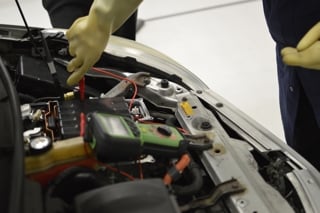Fleet managers are facing a ‘perfect storm’ of ageing vehicles and grey fleet maintenance spend avoidance in 2023, says Prestige Fleet Servicing.
The UK’s average vehicle age is projected to increase from 7.9 to 9.7 years by 2026, leaving 85% of models aged three plus years and requiring an MOT test.
Ageing vehicles require significantly higher maintenance investment than newer models and come with a higher risk of VOR for businesses due to unplanned repairs and servicing, costing fleets an estimated £2.4 billion each year.
Penny Stoolman, managing director of Prestige Fleet Servicing, said: “The average vehicle age increase is worrying in and of itself - although of course not surprising given the impact the semiconductor shortage has had on supply. When this is coupled with the maintenance spend avoidance we are seeing emerge, it creates a perfect storm for businesses, especially those with grey fleets in place.”
Garages are reporting that less than 50% of customers are having advisory work done post MOT with drivers most commonly swerving tyres, brakes and suspension maintenance. Worryingly, this trend is starting to trickle through to essential repairs.
“The cost of living crisis is worrying for many reasons. Across Europe, the UK is already the country where the most part-worn tyres are fitted. We expect to see more drivers drawn by the appeal of part-worn tyres,” said Quentin Le Hetet – GiPA UK – Country Director. “It's important to remind all garages that it is also their responsibility to educate drivers about car repair and maintenance, and to offer safe and affordable choice to motorists.”
Reduced new car supply and contract extensions have resulted in the proportion of service, maintenance and repair (SMR) spend increasing on fleet cars aged four years old or over, new research suggests.
Analysis by Epyx shows that it has increased by more than a half since the pandemic, rising from 28% in 2018 to 43% in 2022.
Furthermore, Epyx says that the average SMR invoice price for those older vehicles is 24% higher than for those aged below four years.





















Login to comment
Comments
No comments have been made yet.